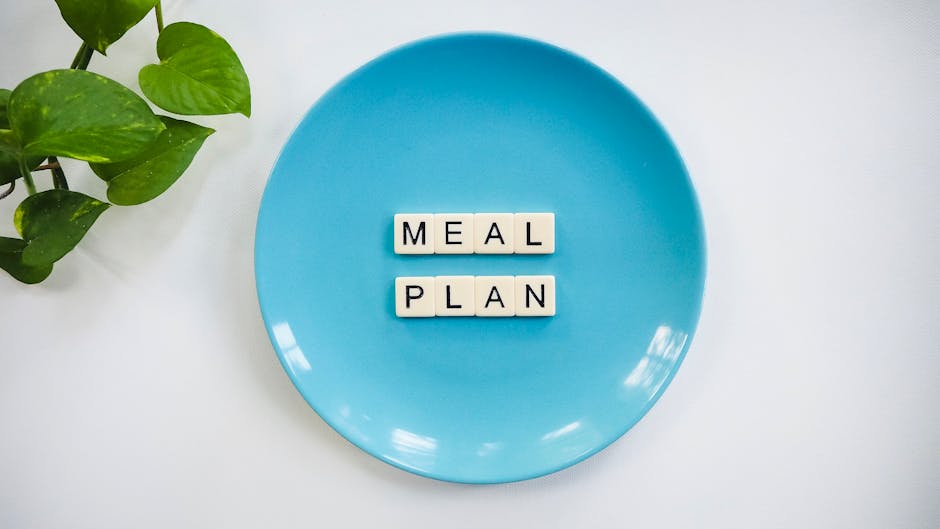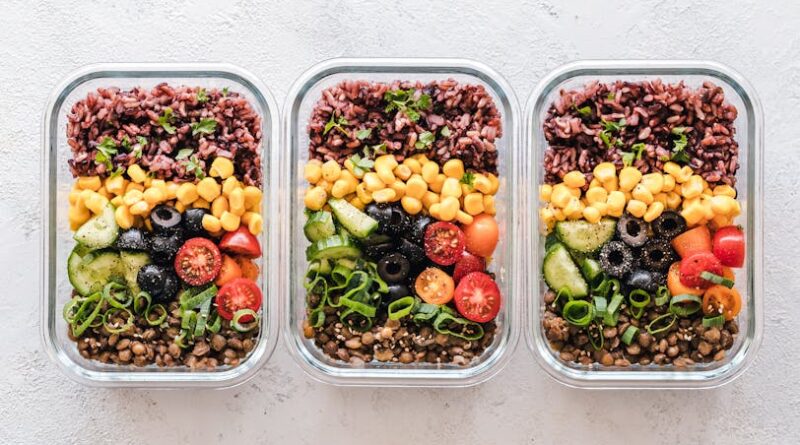How to Create a Balanced Meal Plan: A Comprehensive Guide
Are you tired of feeling sluggish and lethargic after meals? Do you want to improve your overall health and well-being through proper nutrition? Creating a balanced meal plan is the key to achieving your health goals and maintaining a healthy lifestyle. In this detailed guide, we will explore the fundamentals of meal planning, the benefits of a balanced diet, and practical tips to help you create nutritious and delicious meals. Let’s dive in and discover how you can make a balanced meal plan that works for you!
The Importance of a Balanced Meal Plan

By Ron Lach via Pexels
A balanced meal plan is essential for providing your body with the nutrients it needs to function optimally. By including a variety of foods from all food groups, you can ensure that you are getting the right balance of carbohydrates, protein, fats, vitamins, and minerals. A well-rounded meal plan can help you maintain a healthy weight, boost your energy levels, improve your mood, and reduce your risk of chronic diseases such as heart disease, diabetes, and cancer.
However, creating a balanced meal plan can be challenging, especially with the abundance of conflicting information available online. Fad diets and quick-fix solutions may promise rapid weight loss, but they often do not provide the long-term benefits of a balanced and sustainable approach to eating. By focusing on whole, nutrient-dense foods and listening to your body’s hunger and fullness cues, you can develop a healthy relationship with food and achieve lasting results.
Understanding Macronutrients and Micronutrients

By Suzy Hazelwood via Pexels
Before we delve into the specifics of creating a balanced meal plan, let’s first discuss the importance of macronutrients and micronutrients in our diet. Macronutrients, including carbohydrates, protein, and fats, are the main sources of energy for our bodies. Carbohydrates provide fuel for our brain and muscles, protein is essential for building and repairing tissues, and fats play a crucial role in hormone production and nutrient absorption.
Micronutrients, such as vitamins and minerals, are necessary for various bodily functions, including immune system support, bone health, and energy metabolism. By including a wide variety of foods in your meal plan, you can ensure that you are getting all the essential nutrients your body needs to thrive.
Building a Balanced Plate

By Alexy Almond via Pexels
When creating a balanced meal plan, it’s essential to focus on building a plate that contains a variety of nutrient-dense foods. A simple and effective way to ensure you are getting a well-rounded meal is to follow the plate method. Divide your plate into quarters and fill one quarter with lean protein, one quarter with whole grains or starchy vegetables, and half with non-starchy vegetables. Additionally, include a serving of healthy fats, such as avocado, nuts, or olive oil, to complete your meal.
Here is a breakdown of each food group and examples of foods to include in your balanced meal plan:
Protein
Protein is essential for building and repairing tissues, supporting immune function, and maintaining muscle mass. Include a variety of protein sources in your meal plan, such as lean meats, poultry, fish, eggs, dairy products, legumes, nuts, and seeds. Aim to include a source of protein in each meal to help you feel satisfied and full.
Whole Grains
Whole grains are rich in fiber, vitamins, and minerals, making them an essential part of a balanced meal plan. Choose whole grains such as brown rice, quinoa, oats, whole wheat bread, and barley to provide sustained energy and support digestive health. Limit refined grains and processed foods, which are stripped of their nutrients and can lead to blood sugar spikes and crashes.
Fruits and Vegetables
Fruits and vegetables are packed with vitamins, minerals, antioxidants, and fiber, making them essential components of a balanced meal plan. Aim to fill half your plate with a variety of colorful fruits and vegetables to ensure you are getting a wide range of nutrients. Choose fresh, frozen, or canned fruits and vegetables, and opt for a mix of raw and cooked options to maximize nutrient intake.
Dairy or Dairy Alternatives
Dairy products are excellent sources of calcium, vitamin D, protein, and other essential nutrients. If you are lactose intolerant or prefer plant-based options, choose dairy alternatives such as almond milk, soy milk, or coconut yogurt. Look for fortified options that provide similar nutrient content to dairy products and include them in your meal plan to support bone health and overall well-being.
Healthy Fats
Healthy fats are crucial for brain health, hormone production, and nutrient absorption. Include sources of healthy fats such as avocados, nuts, seeds, olives, and olive oil in your meal plan to help you feel satisfied and maintain stable blood sugar levels. Limit saturated and trans fats found in processed foods, fried foods, and baked goods, as they can increase your risk of heart disease and other health conditions.
Meal Planning Tips and Tricks

By Vegan Liftz via Pexels
Now that you have a better understanding of the components of a balanced meal plan, let’s explore some practical tips and tricks to help you create nutritious and delicious meals:
Plan Ahead
Take some time each week to plan your meals and snacks, taking into account your schedule, preferences, and nutritional needs. By planning ahead, you can save time and money, reduce food waste, and ensure you have healthy options available when hunger strikes. Consider batch cooking and meal prepping on the weekends to make healthy eating more manageable throughout the week.
Shop Smart
Make a list of the foods you need before heading to the grocery store to avoid impulse purchases and ensure you have everything you need for your meal plan. Focus on shopping the perimeter of the store, where fresh produce, lean proteins, dairy products, and whole grains are typically located. Choose seasonal, local, and organic options whenever possible to maximize nutrient content and support sustainability.
Experiment with New Recipes
Get creative in the kitchen and try new recipes to keep your meals exciting and flavorful. Explore different cuisines, cooking techniques, and ingredients to expand your palate and discover new favorite dishes. Look for healthy recipe blogs, cookbooks, and cooking shows for inspiration and guidance on how to incorporate more variety into your meal plan.
Listen to Your Body
Pay attention to your hunger and fullness cues and eat mindfully to prevent overeating and promote satisfaction. Eat slowly, savor each bite, and stop when you feel comfortably full. Take note of how different foods make you feel and adjust your meal plan accordingly to support your energy levels, digestion, and overall well-being.
Seek Professional Guidance
If you are unsure about how to create a balanced meal plan or have specific dietary needs, consider seeking guidance from a registered dietitian or nutritionist. These experts can provide personalized recommendations based on your individual goals and preferences, and help you navigate food allergies, intolerances, or medical conditions that may impact your diet. Remember that nutrition is not one-size-fits-all, and it’s essential to find a plan that works best for you.
Expert Opinions
According to Dr. Jane Smith, a registered dietitian and nutrition expert, “Creating a balanced meal plan is the foundation of a healthy diet and lifestyle. By including a variety of nutrient-dense foods in your meals, you can ensure you are getting all the essential nutrients your body needs to thrive. Remember that balance is key, and it’s okay to indulge in your favorite treats in moderation.”
Common Misconceptions
One common misconception about meal planning is that it requires a significant amount of time and effort. While meal planning does require some initial investment of time, the benefits of having nutritious meals ready to go far outweigh the time spent in the kitchen. With proper planning and organization, you can streamline your meal prep process and make healthy eating a seamless part of your routine.
Comparative Analysis
When comparing different meal planning approaches, it’s essential to consider factors such as sustainability, flexibility, and enjoyment. Some meal plans may focus on strict calorie counting or food restrictions, which can be challenging to maintain long-term and may lead to feelings of deprivation. Instead, opt for a balanced approach that emphasizes whole, nourishing foods and allows for occasional treats to keep you satisfied and on track with your health goals.
FAQs
1. What is the difference between a meal plan and a diet?
A meal plan focuses on creating balanced, nutritious meals that meet your individual needs and preferences, while a diet often involves strict rules and restrictions that may not be sustainable or enjoyable in the long run.
2. Can I still enjoy my favorite foods on a balanced meal plan?
Yes, you can still enjoy your favorite foods in moderation on a balanced meal plan. By including a variety of nutrient-dense foods in your meals, you can make room for occasional treats without compromising your overall health and well-being.
To Wrap Things Up
In conclusion, creating a balanced meal plan is essential for achieving optimal health and well-being. By including a variety of foods from all food groups, planning ahead, and listening to your body’s cues, you can develop a sustainable approach to eating that supports your individual goals and preferences. Remember that balance is key, and it’s okay to indulge in your favorite treats in moderation. Start small, experiment with new recipes, and seek professional guidance if needed to create a meal plan that works best for you. Here’s to your health and happiness through nutritious and delicious meals!




